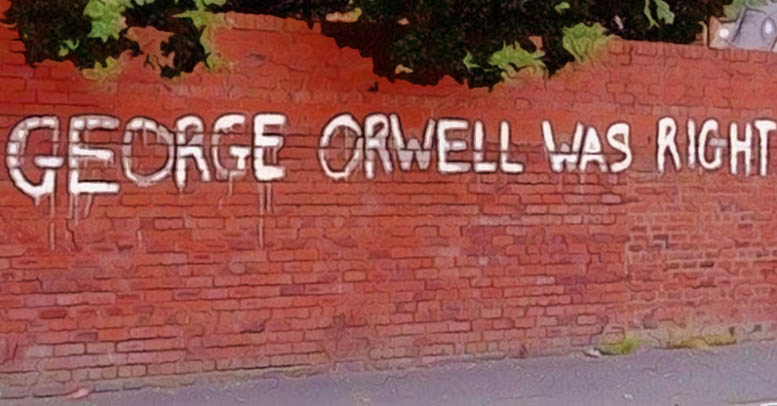Teaching 1984 in 2016
Every year, one high-school educator converts his classroom into a totalitarian state to teach George Orwell’s book. This year, the lesson feels different.

We blanket the campus in posters featuring my face and simple slogans that warn against the dangers of senioritis and declare my program the only solution to the school’s woes. Last year, my program was OSIP (Organization for Senior Improvement Project); this year, it’s SAFE (Scholar Alliance For Excellence). We chant a creed at the start of each class, celebrate the revelatory reports of “heroes” with cheers, and boo those who fail to participate enthusiastically. I create a program Instagram that students eagerly follow. I occasionally bestow snacks as rewards.
After a week, new posters (and stickers) speak less to senioritis and more to, well, me. The new slogans are simpler: my name, mostly. My image is everywhere. I change the rules, requiring students to obtain more points in order to pass. I restrict previously granted privileges, like the right to leave the room to use the bathroom. I subtract points for subjectively noted lapses in conviction. I fabricate a resistance movement and vow to stamp out the ignorant opposition to our noble cause.
Occasionally, a kid groans in exasperation and I fix him with a long, nasty, meaningful look. If a student asks about the point of it all, I ask him why no one else seems to have the same concern. I get louder. I get meaner. I give students points for alerting me to the sources of dissent. Eager to shore up their grades, gleeful at the chance to tweak friends and possibly enemies, a few students furtively hand over notes after classes. I collect the reports two weeks after they start the book, pronounce the experiment over (with language paying tribute to Orwell’s telling appendix), and ask them what they learned.What It's Like Teaching '1984' After Trump's Election - The Atlantic:

